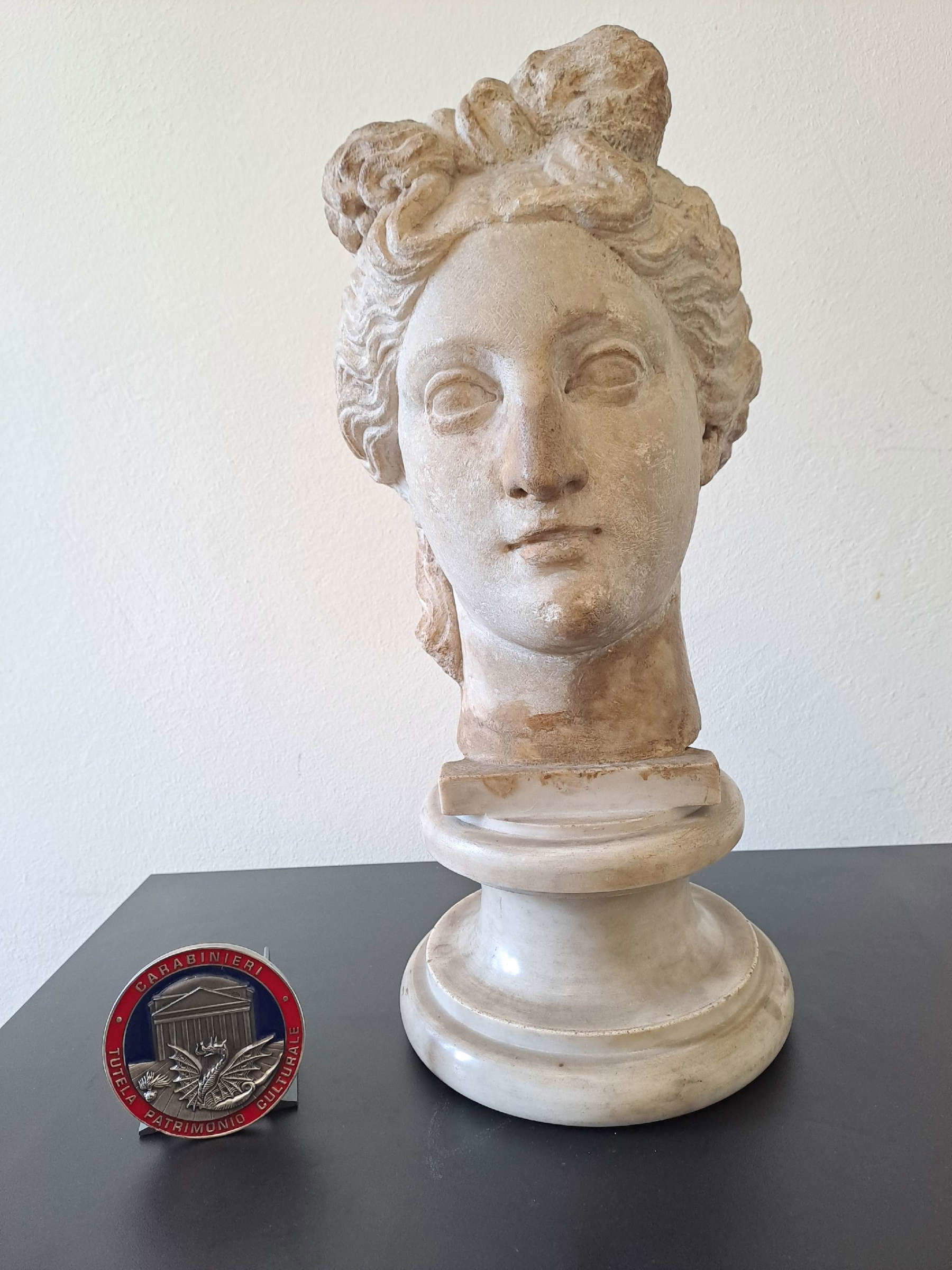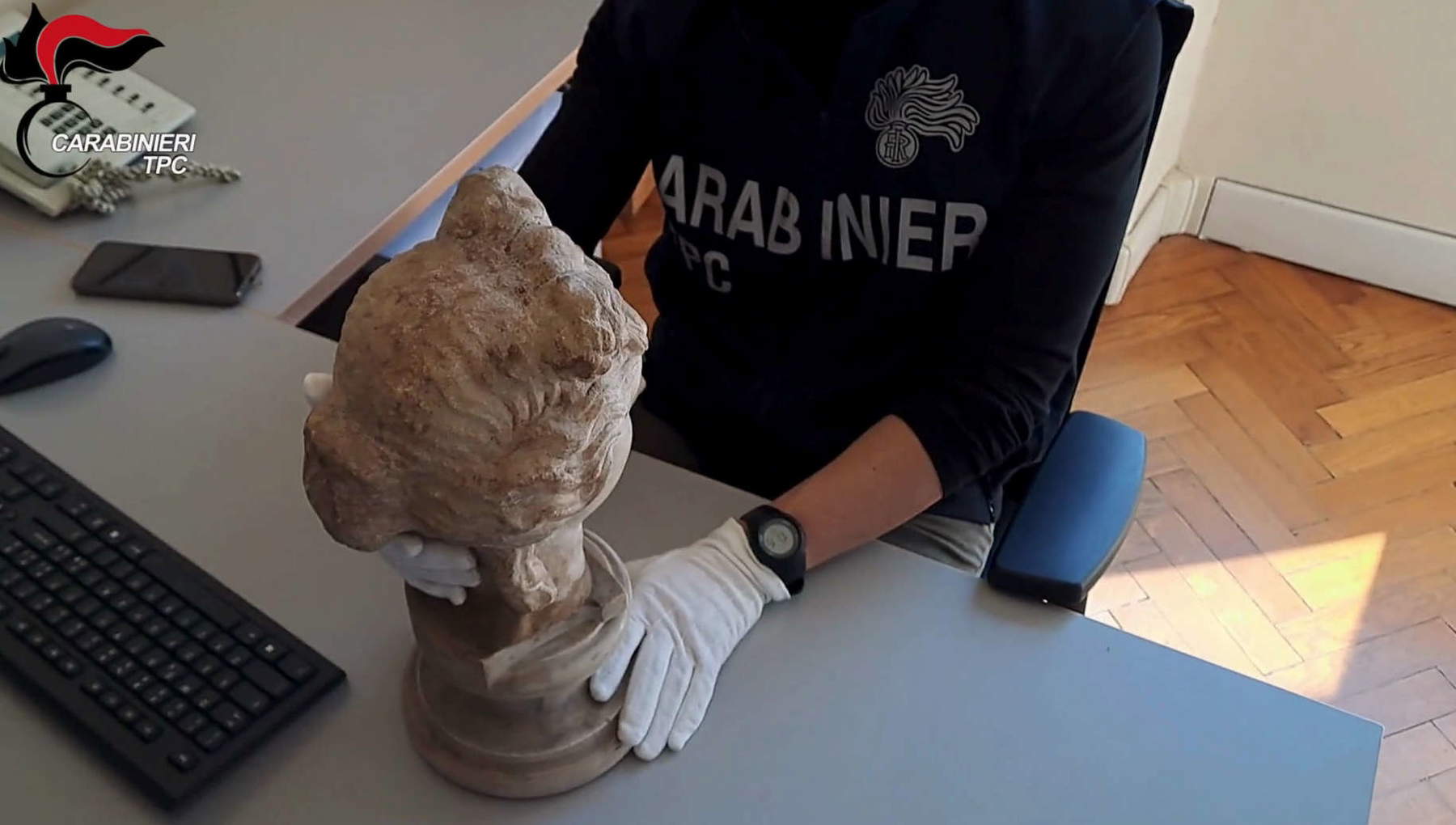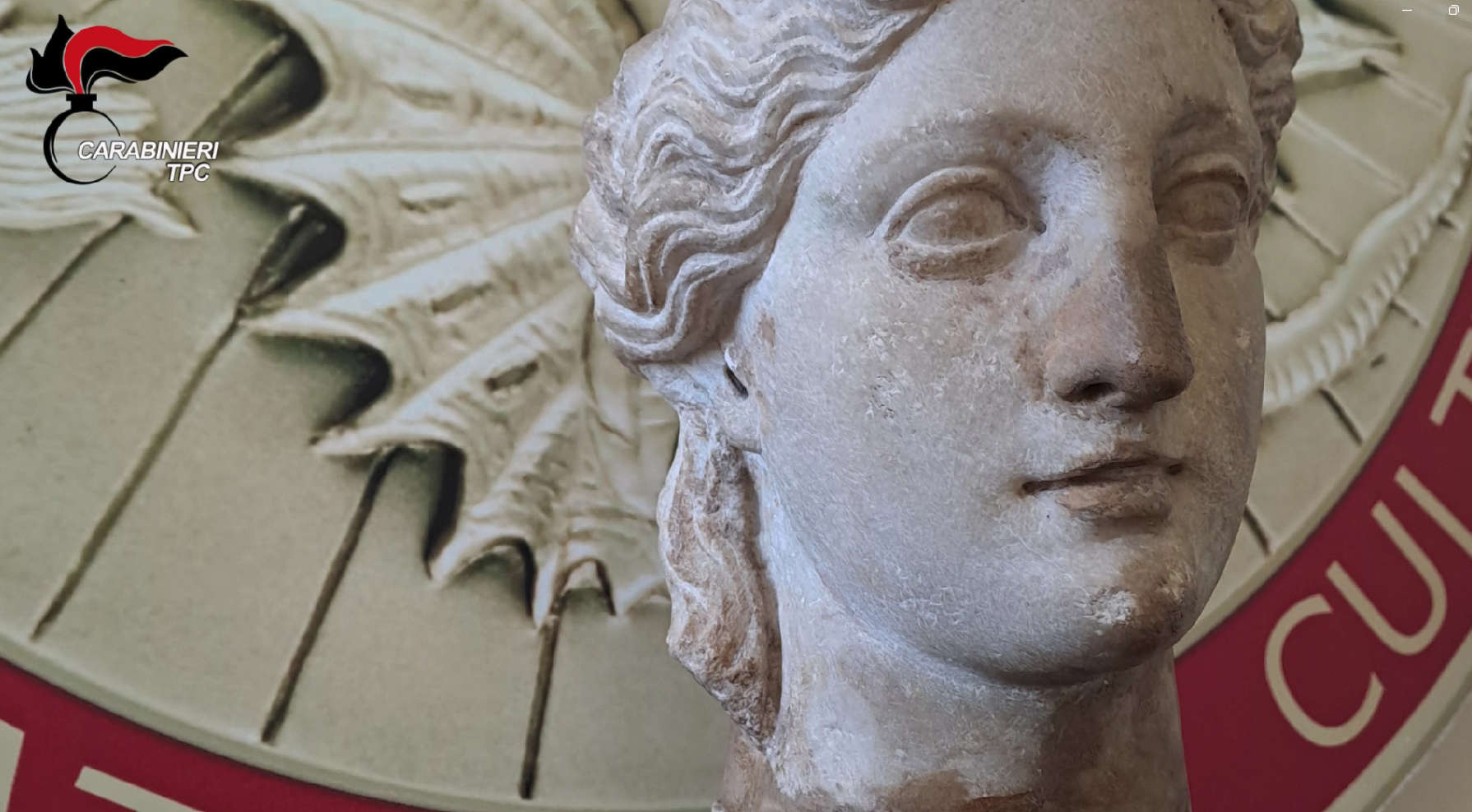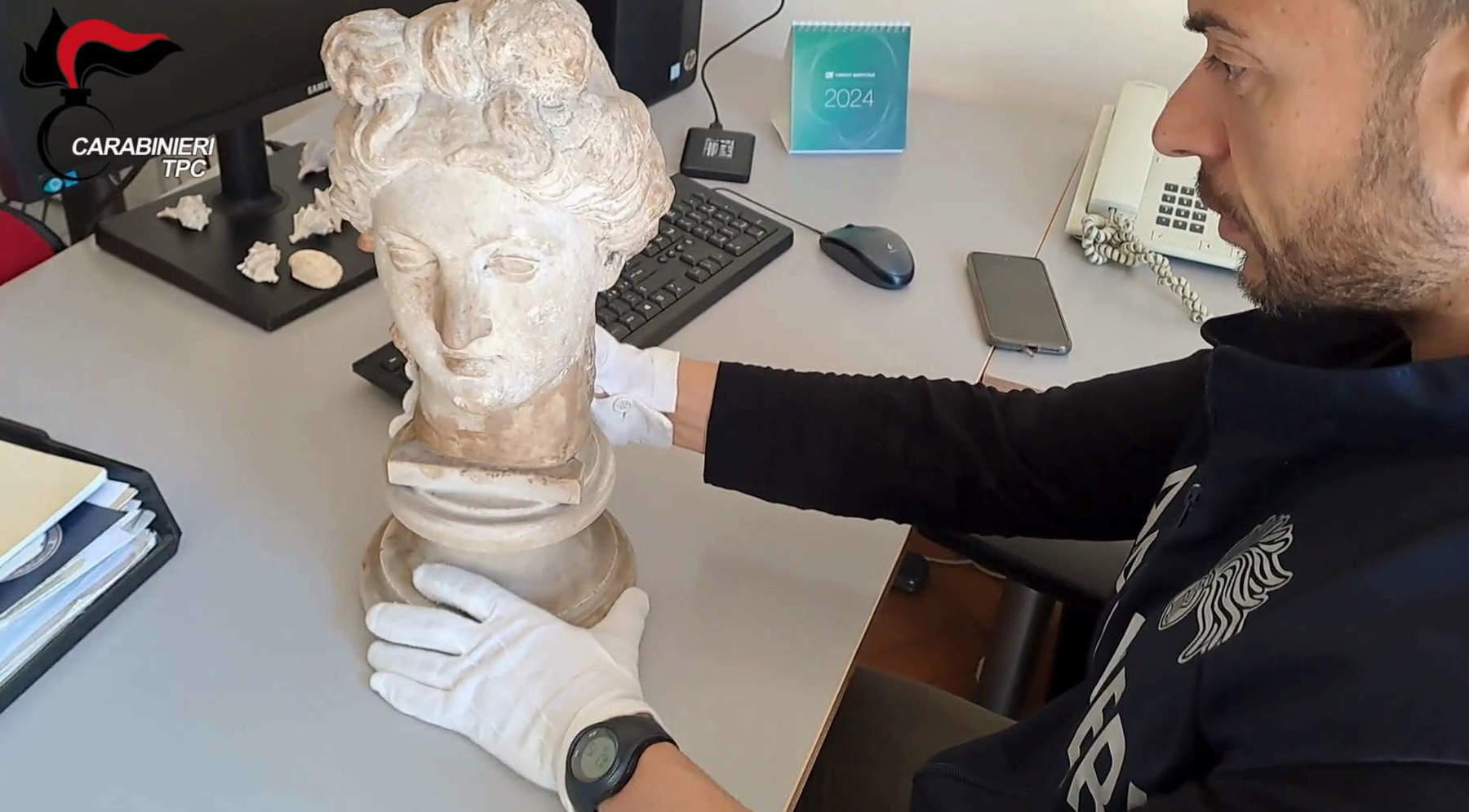Venice, Carabinieri find and return to Archaeological Museums a marble head of Diana
In the morning today, the Carabinieri Tutela Patrimonio Culturale (TPC) unit in Venice officially handed over to the National Archaeological Museums of Venice and the Lagoon a precious marble head depicting the goddess Diana, dating back to Roman artistic production. The work, the result of a fortuitous find and the subject of complex investigation, will enrich the public cultural heritage after decades of oblivion.
The marble head, part of a 1:1 scale full-body statue, was found in 2023 in a basement of a Venetian property, where it had arrived as part of an inheritance. The artifact, according to reconstructions, was first found in the late 1940s and early 1950s in a Tuscan agricultural field. Its discovery, which was never reported, and subsequent acquisition by private parties set up the crimes of unreported chance discovery, theft of cultural property and receiving stolen property. Only with the intervention of the current owners of the Venetian property, who reported the discovery to the Venice Superintendency, was it possible to start the recovery process.

Characteristics and attribution
The work, attributable with certainty to a Roman production, probably from a central-Italic workshop, represents sculptural excellence. The iconographic features-a rich hairstyle with ringlets, chignon and bangs knotted to form a bow-identify it as a female deity, with an exclusive trait reserved for figures such as Diana/Artemis or Venus/Aphrodite.
According to experts, the head was part of a statue designed to be viewed frontally or sideways, likely placed in a niche or leaning against a wall, since the back is barely sketched. Private use in a high-ranking villa or in representative public spaces such as baths seems to be the most likely origin, ruling out a shrine context.

Investigation and recovery
The investigations, initiated in July 2023 by the Venice Public Prosecutor’s Office, were conducted by the Carabinieri of the TPC Unit in close collaboration with the Soprintendenza Archeologia, Belle Arti e Paesaggio (ABAP) for the Municipality of Venice and the Lagoon and the University of Padua.
Thanks to art-historical investigations and technical surveys, it was possible to reconstruct part of the artifact’s history. The artifact, which had been abandoned for decades, had no valid title and, according to current regulations, belonged to the state. In March 2024, the Public Prosecutor’s Office ordered the release of the artifact for the benefit of public property, sanctioning its allocation to the National Archaeological Museums of Venice and the Lagoon.

The role of heritage protection regulations
The affair underscores the importance of Italian laws on the protection of archaeological heritage. In fact, current regulations stipulate that archaeological assets from Italian territory belong to the state, unless proven otherwise by the private individual, who must prove state assignment or possession prior to Law No. 364 of June 20, 1909, the year in which the first organic law on the protection of cultural heritage came into force.
For what the Code of Cultural Heritage and Landscape provides, any transfer, alienation, agreement or legal act made in violation of these rules is declared null and void. The Cultural Heritage and Landscape Code thus guarantees the preservation of the collective heritage by requiring the return of objects unlawfully taken from public enjoyment.

An asset returned to the community
The recovery of Diana’s marble head is the result of careful investigative work by the Venice Carabinieri TPC Unit, which operates through checks at sector businesses, reports from scholars and citizens, and collaborations with the Ministry of Culture. The return to public heritage represents not only an operation of legality, but also an act of cultural enhancement. The work, a testament to Roman civilization, will once again become available for public use, offering an important window into the artistic and social history of an era.
The marble head of Diana will be displayed in the National Archaeological Museums of Venice and the Lagoon, institutions dedicated to the preservation and enhancement of historical and artistic artifacts. The new acquisition will further enrich the museum collections, contributing to the narrative of the rich and complex history of the Italian territory. With this intervention, the Venice TPC Carabinieri confirm their crucial role in safeguarding cultural heritage, reaffirming the principle that archaeological assets do not only belong to the past, but represent a shared legacy to be preserved for future generations.
 |
| Venice, Carabinieri find and return to Archaeological Museums a marble head of Diana |
Warning: the translation into English of the original Italian article was created using automatic tools. We undertake to review all articles, but we do not guarantee the total absence of inaccuracies in the translation due to the program. You can find the original by clicking on the ITA button. If you find any mistake,please contact us.




























